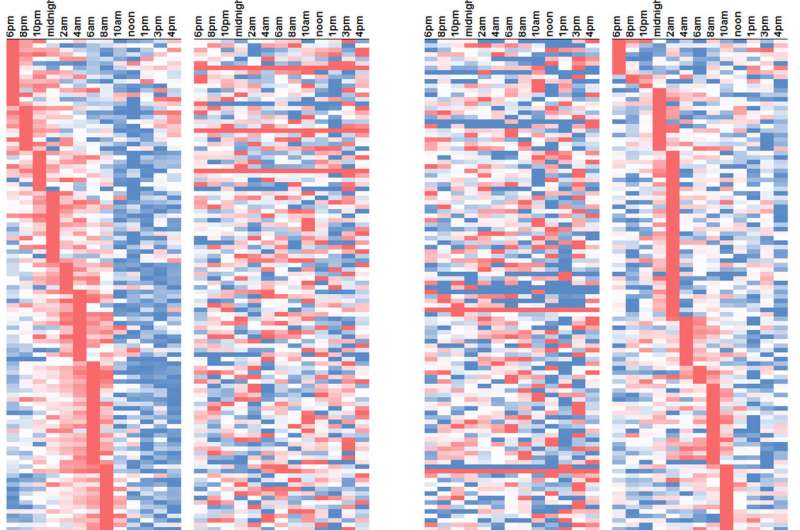Circadian clock discovery could help boost water efficiency in food plants

A discovery by Texas A&M AgriLife Research scientists in Dallas provides new insights about the biological or circadian clock, how it regulates high water-use efficiency in some plants, and how others, including food plants, might be improved for the same efficiency, possibly to grow in conditions uninhabitable for them today.
The scientists in their study, published in the journal Genome Biology and Evolution, identify 1,398 transcription factors, proteins that regulate expression of certain genes in pineapple. Of those, nearly half exhibited time-of-day specific or diurnal gene expression patterns, which could be important in uncovering the genetic controls for water use in plants.
"This is an important step in understanding the overall circadian regulation of water-efficient photosynthesis and how that efficiency might be replicated in other plants, namely food crops," said Dr. Qingyi Yu, AgriLife Research associate professor of plant genomics in Dallas.
Her team's study comes on the heels of the 2017 Nobel Prize in Physiology or Medicine, awarded this year for discoveries related to the molecular mechanisms that control circadian rhythm.
Yu's group focused on pineapple, a water-efficient tropical plant that uses crassulacean acid metabolism or CAM photosynthesis. During photosynthesis, CAM plants open their stomata at night to facilitate water-efficient gas exchange compared to C3 plants, whose less water-efficient gas exchange occurs during the day. The majority of food crops, including rice, wheat, soybean and cotton, use C3 photosynthesis.

Researchers found certain genes regulated by the biological clock to express similarly in two tissue types of the pineapple plant: those that contribute to photosynthesis and those that do not. The finding represents a new paradigm for identifying core clock genes, Yu said. The method revealed what might be components of the circadian clock or oscillator that regulates CAM activity.
The discovery is a leap in understanding the genetic mechanisms of highly water-efficient CAM photosynthesis and using the knowledge for crop production in the future, Yu said.
"We believe at some point we can improve water intensive C3 plants to the extent that they also employ CAM photosynthesis," she said. "By understanding these genetic controls, we can help plants adapt to changing climates, possibly growing food in environments where it would be impossible today."
Yu said the next step in the ongoing research is to confirm the functions of the prospective circadian oscillator.
More information: Anupma Sharma et al. Diurnal Cycling Transcription Factors of Pineapple Revealed by Genome-Wide Annotation and Global Transcriptomic Analysis, Genome Biology and Evolution (2017). DOI: 10.1093/gbe/evx161
Provided by Texas A&M University


















